
After two weeks in the Caucasus—first in Azerbaijan, then Georgia—we crossed into Armenia, my final stop.
Armenia is a small, landlocked country of about three million people, bordered by Georgia, Azerbaijan, Iran, and Turkey. It carries some big “firsts” in its history—like being the first nation to adopt Christianity as a state religion in 301 AD. The country has seen empires come and go, endured earthquakes, and still carries the weight of the the 1915 genocide.
This first part of my Armenia travelogue covers Days 1–3: crossing the border from Georgia, first impressions of Yerevan, and a day trip south into Armenia’s monasteries and wine country.
We left our hotel later than planned, so by the time we reached the Sadakhlo–Bagratashen border it was already crowded with busloads of people. We walked toward passport control and joined the line behind a large group, inching forward through the fumes of idling buses and the shuffle of bags. About 30 minutes later, we were out the other side.
Crossing the bridge over the Debed River into he strip of no-man’s-land between the two countries wasn’t unfamiliar — I’d had a similar in-between feeling at border crossings in the Stans. Then came another long queue for passport control on the Armenian side. Once inside, we had to put our luggage through an x-ray machine, and after about 40 more minutes of waiting, I was finally through. Just part of travel.

As we drove further in, the landscape changed—steeper cliffs, dry hills, narrow gorges. The towns felt more stripped back than in Georgia—with a rugged edge.
The drive to the capital is about 170–180 km (105–110 miles), roughly four hours, following the Debed River through the Lori region, past farmland and half-abandoned industrial towns.
About two hours in, we stopped at Haghpat Monastery, a UNESCO World Heritage Site. Founded in the 10th century, Haghpat sits high on a ridge above the Debed Valley, its gray stone blending into the cliffs, almost disappearing into the landscape.

From the outside it feels more like a fortress than a monastery, with solid stone walls rising against a backdrop of steep cliffs and narrow valleys. The main portal is framed by an arch filled with interlacing patterns and Armenian inscriptions.

Inside lies a whole complex—churches, chapels, a bell tower, even a scriptorium where monks once copied manuscripts by hand. Above the altar in the main church, a faded fresco of Christ is still visible, patchy but hanging on after more than a thousand years.

Everywhere I looked, khachkars—the carved cross-stones Armenia is famous for—covered the site. They were cut into walls, doorframes, and even interiors. Crosses marked almost every surface. Some were simple, others intricate and detailed, and many worn down to soft outlines, almost disappearing back into the stone.

About 45 minutes from Yerevan we made another stop—this time at the Armenian Alphabet Monument, built in 2005 to mark 1,600 years of the Armenian alphabet. Thirty-nine giant stone letters stand scattered across a windy hillside. At first it seemed like an odd memorial, but after learning that the alphabet was created in 405 AD by Mesrop Mashtots—and is one of the reasons Armenian language and culture survived centuries of upheaval—it made more sense. Set against the backdrop of Mount Aragats, it felt less like a quirky roadside stop and more like a symbol of survival.

By evening we reached Yerevan and checked into the Best Western Plus Congress Hotel in the Kentron district. It turned out to be the perfect walking location: just a few minutes from Republic Square, museums, parks, cafés, and more.
After dropping my bag and freshening up, I headed out to find dinner on my own and walked through Republic Square. At night the buildings had a pink glow under the lights—government ministries, the History Museum, the National Gallery—all that heavy Soviet-era scale, but still impressive. The fountains in the center were running, and the whole place had a nice buzz to it.
Dinner was at a busy little place called Tumanyan Khinkali, known for its Georgian-style dumplings. On my waiter’s suggestion I ordered a vegetable-stuffed pepper. Almost immediately I regretted it—there were vegetarian dumpling options, and all around me people were getting plates of them. The pepper was okay, nothing special. Still, it was nice sitting outside with a glass of wine on my first night in Armenia.

On the way back I came across a water-and-light show in Yerevan 2800th Anniversary Park across from my hotel. Every half hour the fountains leapt and shifted colors to music. I found a bench and stayed for a while. Already, I knew I was going to love this city.

Yerevan is Armenia’s capital, but it doesn’t feel overwhelming. Everyday life and history overlap in small, unexpected ways—like a Soviet block with a café tucked underneath, or a church standing right next to a busy traffic circle. The buildings glow pink in the right light (thanks to the local tufa stone), and the streets go from wide Soviet-style boulevards to quieter corners with cafés, murals, and leafy parks. Republic Square is the big showpiece, but what I liked most was how walkable it felt—easy to wander, easy to come across something new without really looking for it.
I started the day with a visit to the Mother Armenia monument and the military museum beneath it. The statue towers above Yerevan, replacing an earlier Stalin figure that was dismantled in 1962 and unveiled five years later in 1967. Today it stands as both a symbol of national strength and maternal protection. At her feet is a memorial to the Unknown Soldier, flanked by tanks and Soviet artillery lined up like a power display. It feels part reverence, part Cold War chest-puffing—a little strange, honestly.

Inside the museum, it becomes clear this isn’t only about Soviet bravado—it’s about loss. Rows of photos and artifacts honor Armenian men who died in World War II, the First Nagorno-Karabakh War, and other major conflicts. I had forgotten just how many different wars Armenia has been pulled into over the last century. The displays are dated, but the stories are still affecting—uniforms, letters, black-and-white portraits of soldiers who never came home.

From the Mother Armenia monument we headed to the Cascade Complex, one of Yerevan’s most iconic landmarks. It’s a massive limestone staircase that connects the lower and upper parts of the city, lined with fountains and sculptures. You can walk up the steps or ride the long escalator inside—and either way you’re rewarded with views over Yerevan and the distant twin peaks of Mount Ararat.
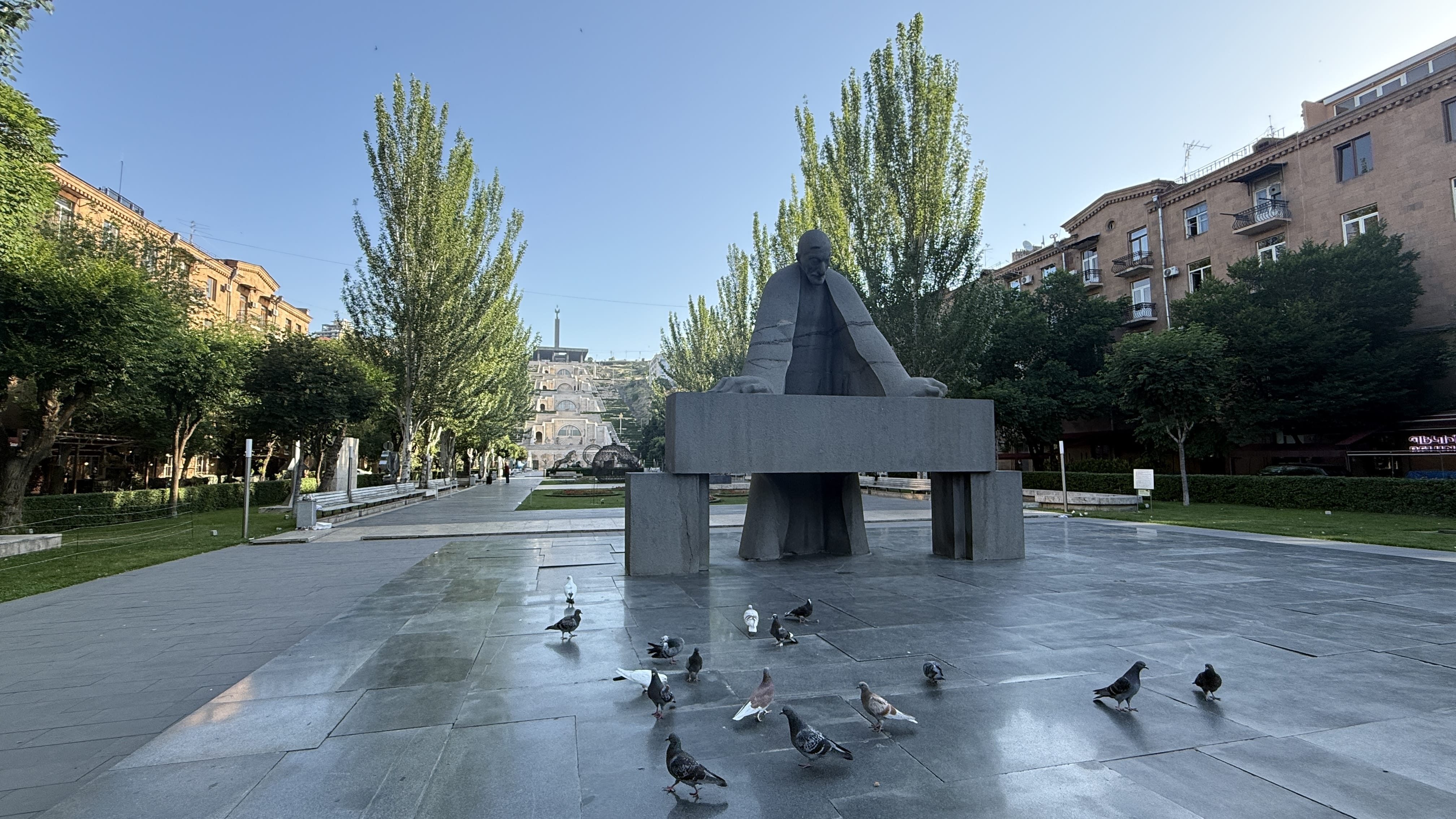
At the base of the Cascade is a beautifully landscaped sculpture garden filled with modern art. My favorites were by Fernando Botero—especially Smoking Woman and Gatto, his oversized, round cat sculpture that somehow feels both comical and dignified. I also loved the two horse statues by British artist Tom Hill (a sculptor known for creating animal forms from welded horseshoes), rising up toward each other in the garden.


We headed next to the Lusik Aguletsi House-Museum. There’s a little restaurant attached, so we grabbed coffee and a freshy made Gata before our tour. Lusik Aguletsi was an Armenian painter and ethnographer, known for her miniatures and for preserving folk traditions. She wore traditional dress every day of her life, and after her death in 2012 her home was turned into a museum.
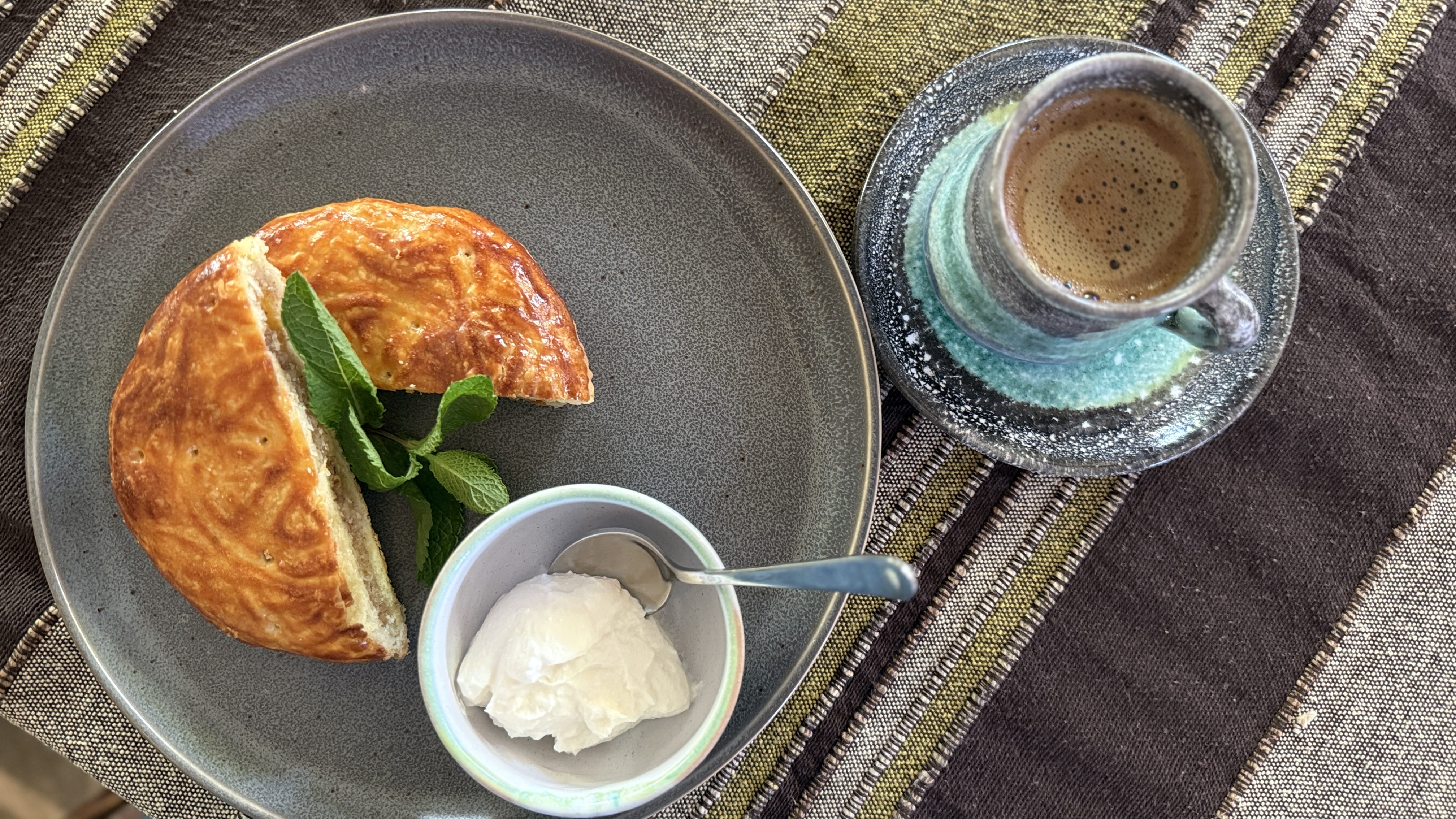
Today it holds her paintings, photographs, and the collections she spent a lifetime gathering—folk costumes, jewelry, ritual dolls, carpets, and other pieces of Armenian heritage. The house itself, with its wooden balconies and vine-draped courtyard, felt more like stepping into someone’s home than a formal museum.
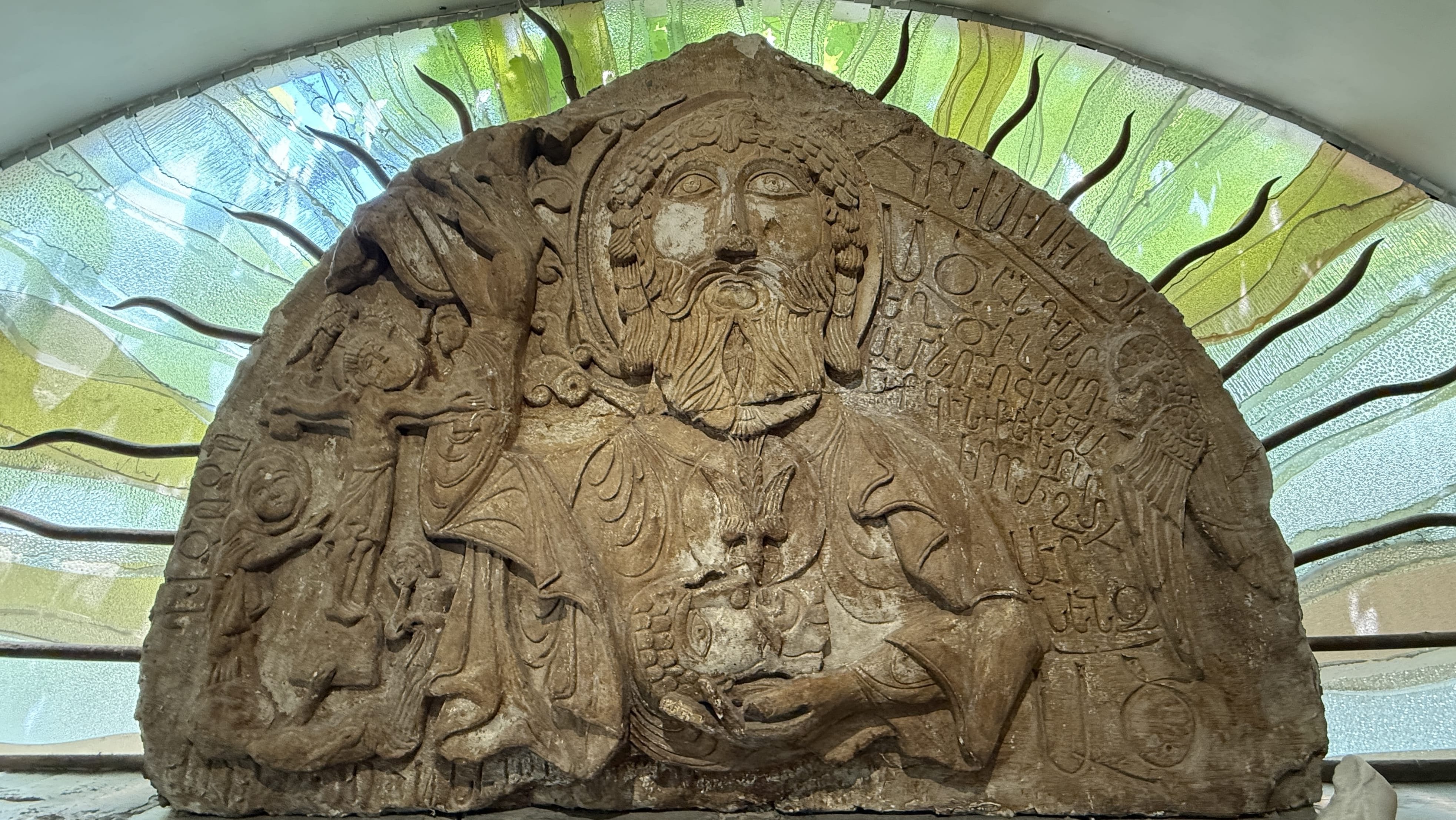
Lunch was at a place called Eshe, where a huge spread was brought to the table—but not much for a vegetarian. Rather than sit and watch everyone else eat, I slipped away to explore the nearby Tamanyan Street. Our guide clearly hadn’t gotten the memo that I was a vegetarian, so I told her later. After that she always made sure the meals included plenty of vegetarian items as well (at least in the cities). Honestly, I almost regretted mentioning it—I’m not a big eater, and suddenly there was always more food headed my way.
Tamanyan is one of Yerevan’s main pedestrian avenues—broad, tree-lined, and lively. Both sides are lined with shops, cafés, and outdoor terraces, and steps lead down into an underground level with more stores.

While wandering, I spotted a mural—painted, of all places, on the side of Tumanyan Khinkali, the restaurant where I’d eaten the night before. It was by Alec Monopoly, the street artist whose work I’d seen plenty of times in New York. It felt surprising to come across him here, in Yerevan. A few days later I stumbled on another one of his pieces. Curious, I googled it and found out he’d recently been invited to Armenia and painted a pair of murals as a gift to the city. Still, it was odd to run into something so familiar in a place so far away.
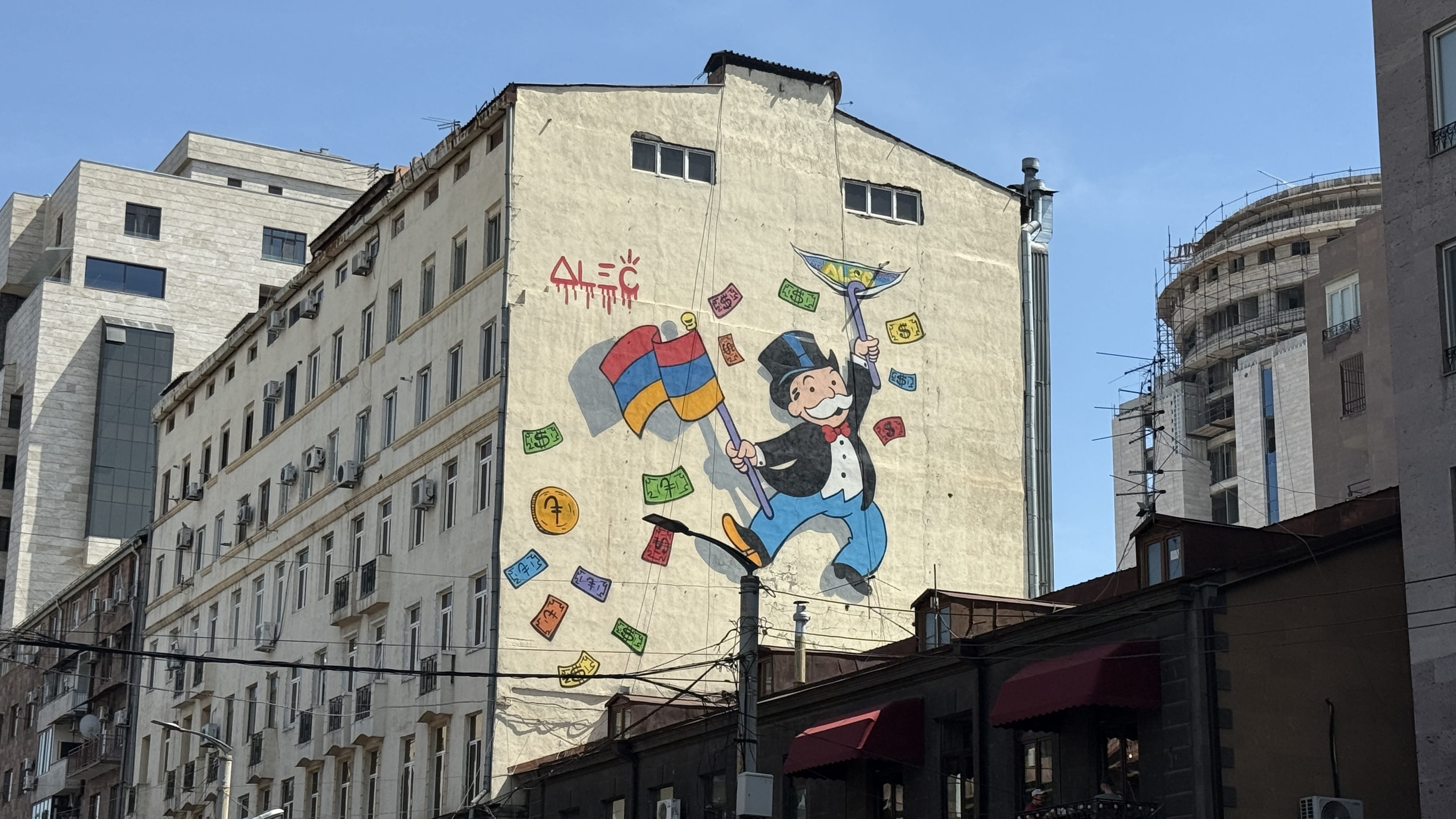
Mural aside, it was pretty clear how much public art there was in Yerevan—the fountains, the murals, the sculptures. It felt like every corner had something. Statues are everywhere. One of my favorites was the bronze figure of Arno Babajanyan, the Armenian pianist and composer, caught mid-performance with his arms flung upward like he was pulling music out of the sky—theatrical and wild.

Even the water fountains scattered throughout the city—called pulpulaks—feel like small works of art. Each one is different, some simple, others more sculptural or decorative. There are over a thousand of them in Yerevan alone, and they constantly offer cold, clean drinking water for free. It’s practical, but it also says something about how the city balances everyday life with art.
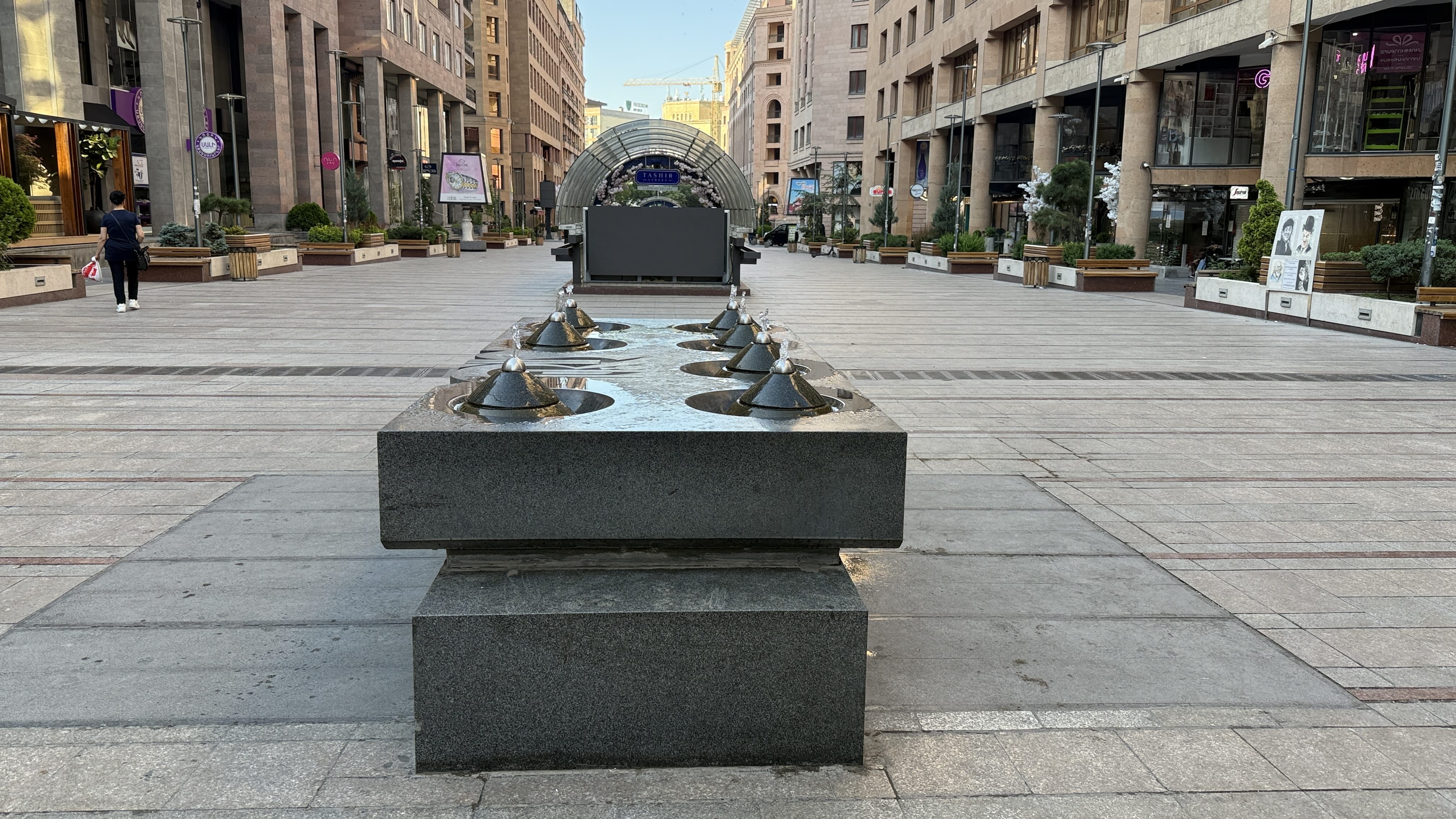
After lunch we headed to the Armenian Genocide Museum at Tsitsernakaberd. I knew the rough outlines of the 1915 genocide, but not the full scope or cruelty of it. About 1.5 million Armenians were killed under the Ottoman Empire. First, they went after the educated—doctors, priests, community leaders. Then men were separated from their families and executed. Women and children were forced on death marches through the desert. The museum’s stories were deeply personal—photos, letters, belongings—and some of the descriptions were tough to read.
The memorial itself is striking. A tall split spire represents Armenians in the homeland and the diaspora, and below it an eternal flame burns, encircled by twelve stone slabs in memory of the lives lost. Simple, but powerful.
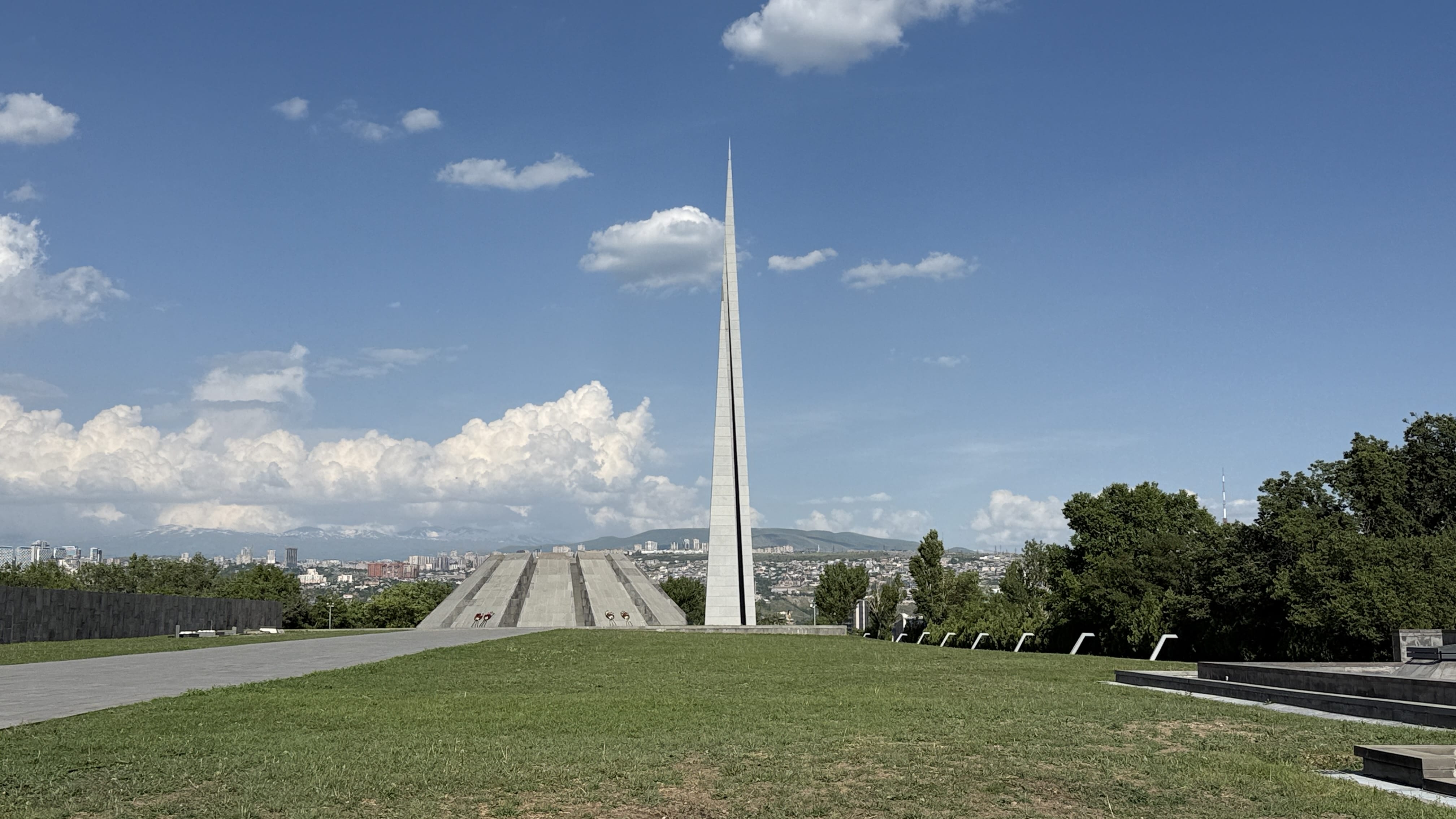
One thing our guide mentioned stuck with me: under Soviet rule, Armenians weren’t allowed to speak openly about the genocide. The memorial wasn’t even built until 1967. And to this day, Turkey still refuses to recognize it as genocide. People have been threatened—or worse—for trying to tell the truth. But I guess that’s the complicated part of history—each side holds to its own version of what happened. I’ve seen that in other places I’ve been lucky enough to travel, places with their own complicated stories and underlying tensions.

Later that evening, I went back out—looping past some places I’d already seen and stumbling onto a few new ones, like Charles Aznavour Square. It felt instantly welcoming, framed by the Stanislavski Russian Theatre (one of the city’s main Russian-language stages) and a hotel, with a fountain in the middle where twelve zodiac statues sprayed arcs of water.
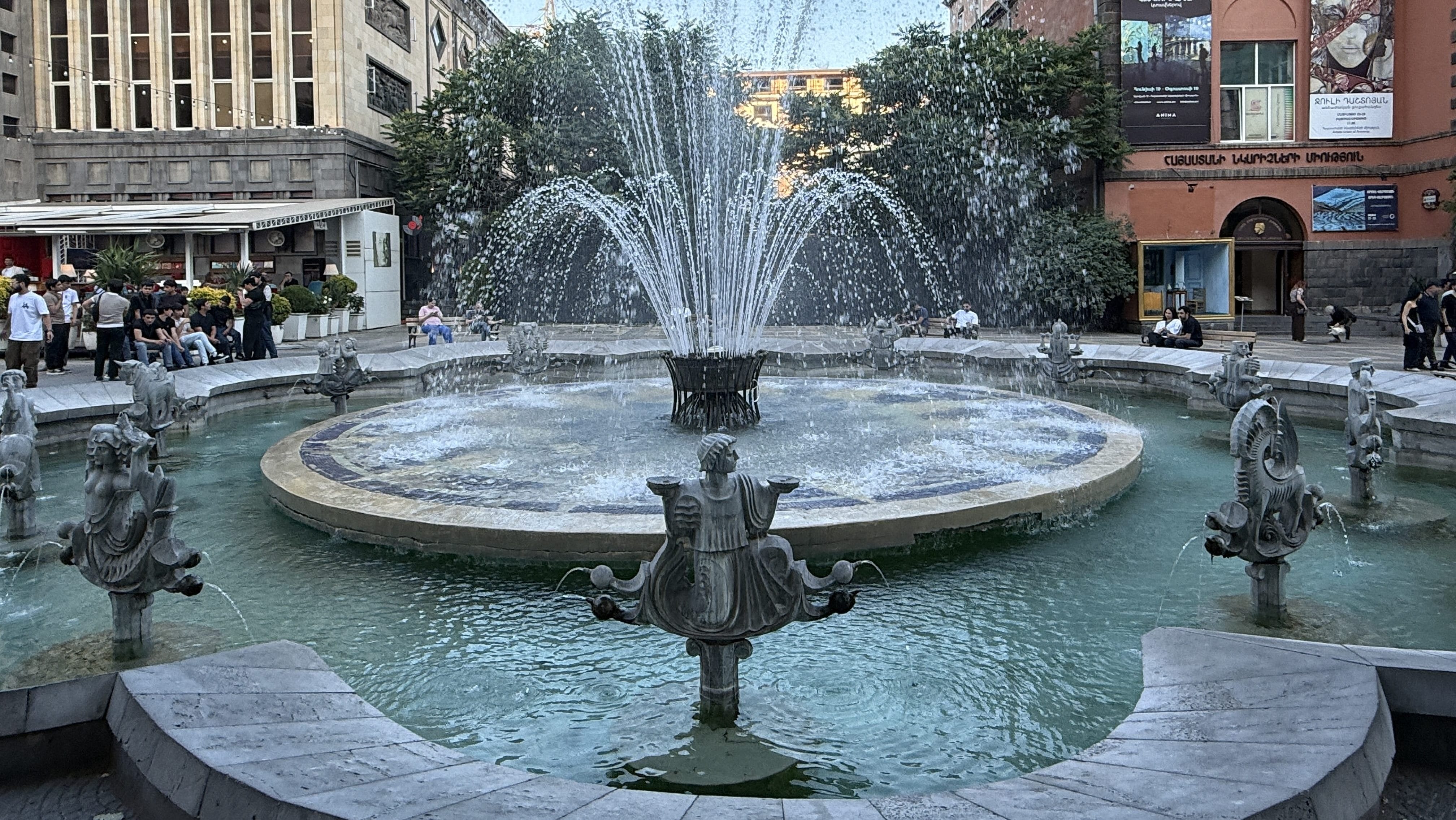
Just off to the side was something completely different: The Spider by Armenian artist Ara Alekyan. Made from salvaged metal, springs, and bolts—some of its debris from the 1988 earthquake—it’s big, raw, and industrial. It looked half creature, half machine.
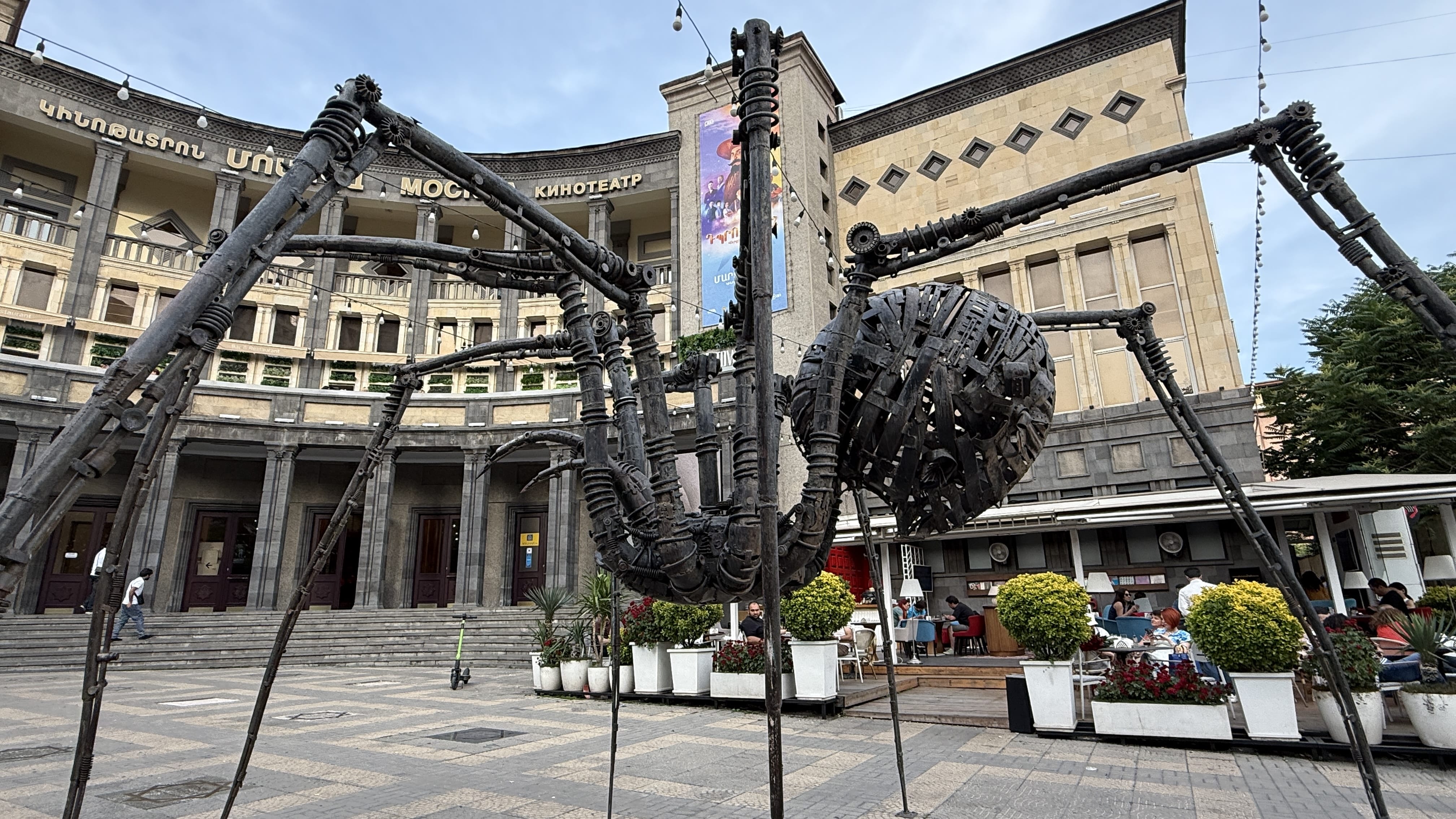
From the square I headed to Indian Mehak Restaurant for dinner. It turned out to be fabulous, with plenty of vegetarian options—something I appreciated after a long day.
Heading back toward my hotel, I ended up at Republic Square again, this time catching the full light-and-music show. Huge jets of water were choreographed to classical music, with colored lights shifting to the rhythm. It was fun to sit among the locals who gathered there each night to watch.

Later that night, back in my room, I looked up Charles Aznavour, wondering why he had a square named after him. I didn’t recognize the name at first, but to my surprise I had heard his music before—his song She plays at the end of Notting Hill. He was a French-Armenian singer, the child of genocide refugees, and one of France’s most beloved performers.
After the 1988 earthquake he raised millions for Armenia and kept supporting cultural projects here for years. Suddenly the square felt less random and more like a tribute to the way Armenian culture has reached far beyond its borders.
After two full days in Yerevan, it was time to see more of Armenia.
We left Yerevan early in the morning, heading south toward the Turkish border. The city faded quickly into open land—rolling fields, scattered villages, and then a clear, dramatic view of Mount Ararat rising ahead. It’s hard to put into words how striking it is. The mountain may technically sit in Turkey now, but for Armenians it’s everywhere—on murals, bottles of brandy, the national coat of arms. And here it was in real life, snowcapped and massive behind the ancient monastery of Khor Virap.
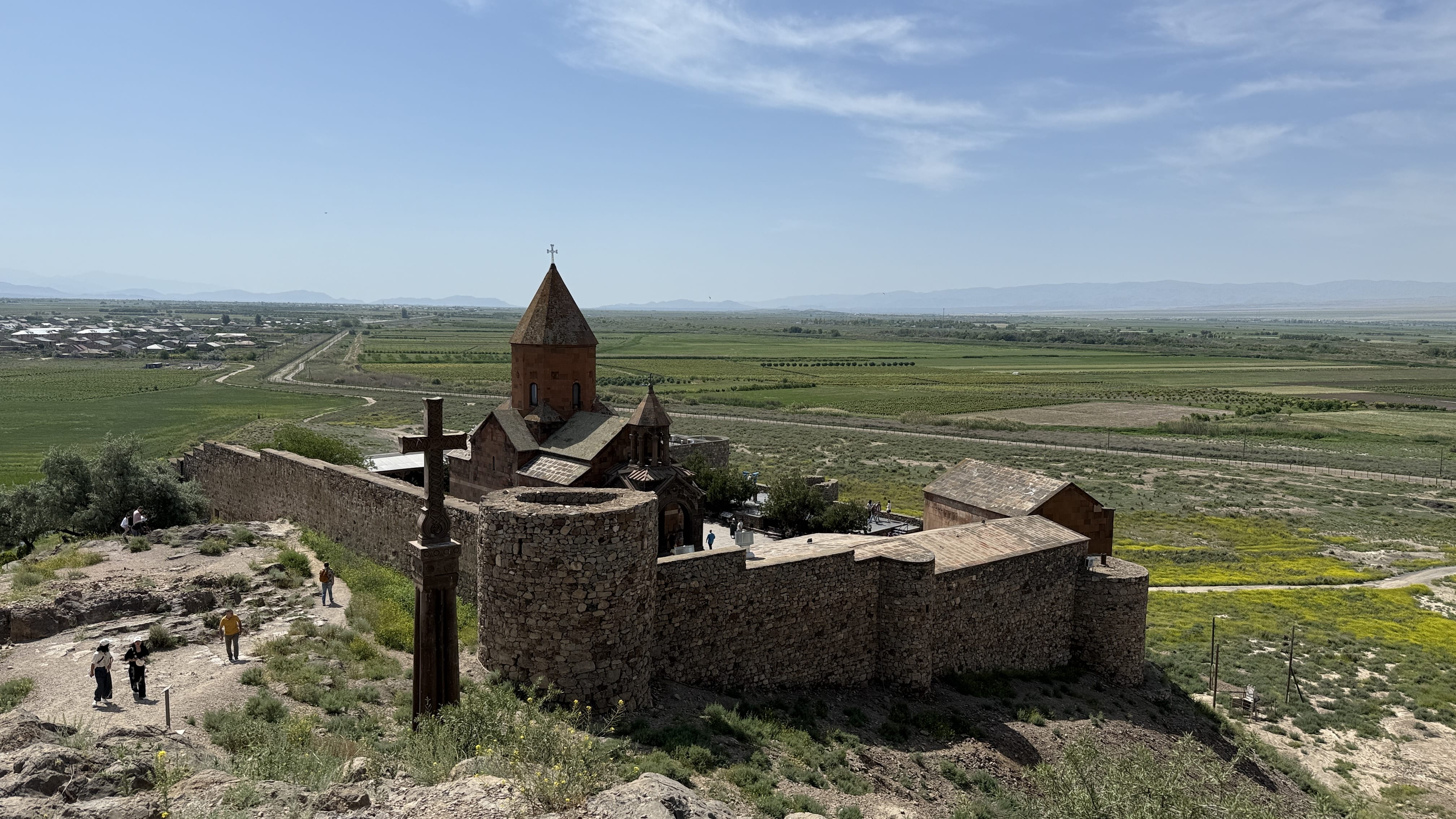
The setting couldn’t be more cinematic. The monastery stands on a small hill with nothing but fences and a few watchtowers between it and Turkey. The border is closed, but the view feels wide open.

Khor Virap is a deeply symbolic place in Armenia’s religious history. It’s where Gregory the Illuminator, who would later become the country’s patron saint, was imprisoned for 13 years in a deep pit after refusing to renounce Christianity. The pit is still there—you can climb down into it on a metal ladder, which of course I did. Gregory eventually helped convert the king, and in 301 AD, Armenia became the first nation in the world to adopt Christianity as its official state religion.
The Armenian Apostolic Church still traces its roots back to that moment. The carvings on some of the buildings were astounding. Before leaving, I walked up a path behind the church that gave the perfect view—not only of Khor Virap, but also the surrounding landscape.
From there, we drove on through the Vayots Dzor region, where the land turns rocky and almost red. Our next stop was the Noravank Monastery, set on a ledge at the edge of the Gnishik Gorge. The cliffs around it are streaked with copper and iron, and the whole setting looks like it was painted in layers.

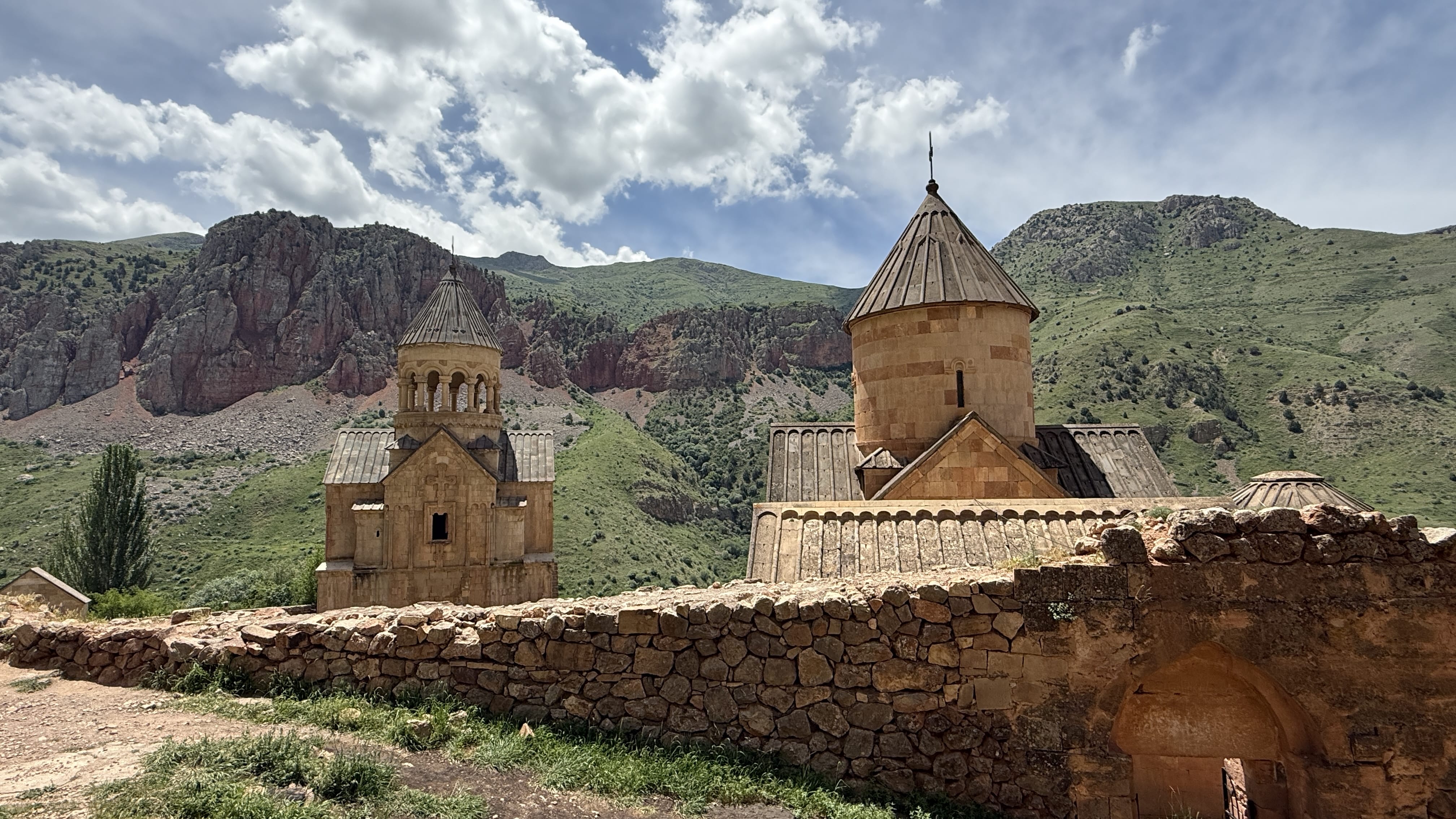
The monastery itself is small and quiet, built in the 13th century on a site that was sacred long before. It isn’t just one church but a complex, with chapels and ruins scattered across the grounds. The most striking building is Surp Astvatsatsin (Holy Mother of God), its two-story façade rising right out of the cliffs. A narrow stone staircase runs straight up the front—so steep it looks decorative, though people really do climb it.

What stood out most to me were the carvings. Over the main doorway is a relief of God the Father holding a cross, flanked by angels—an image that’s unusual in Armenian church art. Even the doors are decorated with crosses and vines, as detailed as the khachkars scattered around the site. And those khachkars are everywhere—set into walls, standing on their own, some simple, some incredibly ornate—giving the whole place a layered, textured feeling.
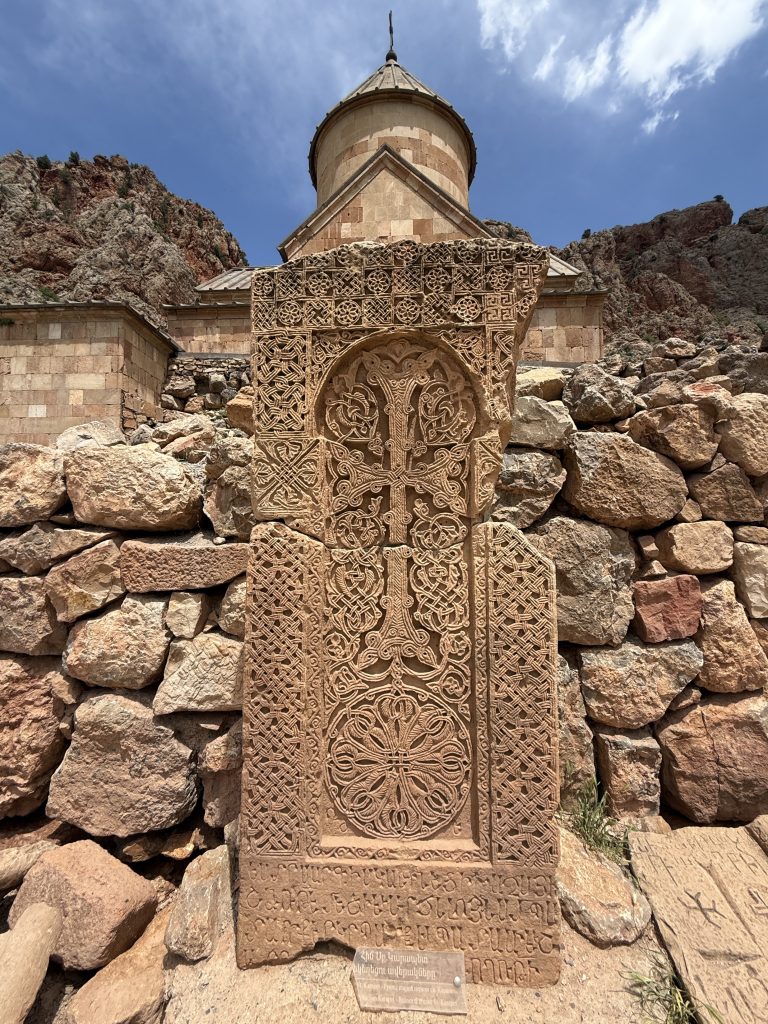
From there we stopped at Areni-1 Cave. At first it just looks like a cave, but once you know what was uncovered here it’s pretty mind-blowing. Archaeologists found the world’s oldest known winery, dating back over 6,000 years, along with a perfectly preserved leather shoe, a woven skirt, and even traces of human brains. It may look like a cave, but it holds the story of some of the earliest winemaking and ritual life in the world.


After a wine tasting at Stepanyan’s Gastro Yard, we had lunch in their outdoor gazebo. Skewers of meat and potatoes were cooked in a tonir clay oven.
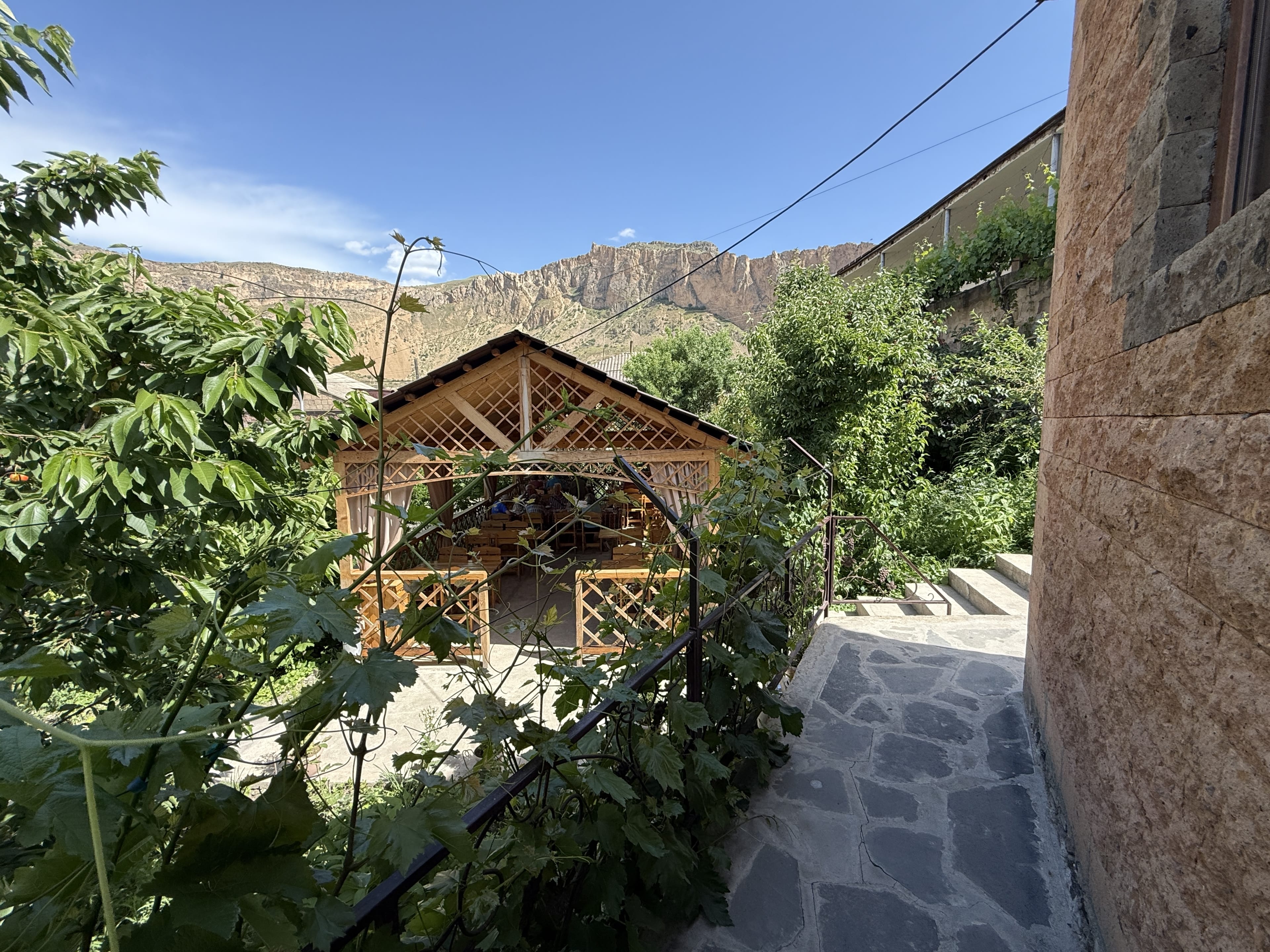

Besides the skewers, we had sides—salads, grilled peppers, tomatoes, herbs, and plenty of bread—served family-style. This whole area was once part of the Silk Road, a major route for traders moving between East and West. Armenia exported wine, horses, and textiles—small things that traveled far. The land here is tough but generous, and even today it feels like the kind of place people pass through and remember.
By the end of Day 3, I’d settled into a rhythm: days out exploring monasteries, caves, and wine country, and evenings back in Yerevan. It was the perfect base—but the week was far from over. In Part 2, I’ll share the rest of my journey through Armenia’s mountains, lakes, and western towns.
[Day 4 and beyond continues in Part 2.]

Hi, I’m JoAnne—writer, wanderer, and lover of places that surprise me. I’ve traveled to 60+ countries (and counting), usually with a camera in one hand and a notebook in the other. I’m drawn to mosaics, markets, and mountains, and I write to remember what moved me. When I’m not traveling, I’m working on my blog Travels Afoot, trying new creative projects, or planning my next adventure.